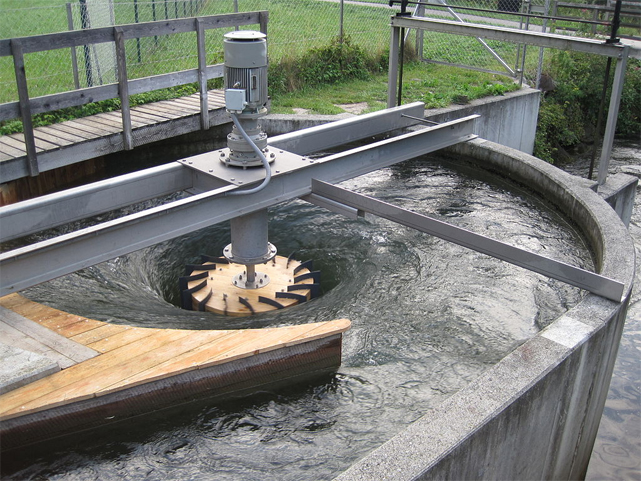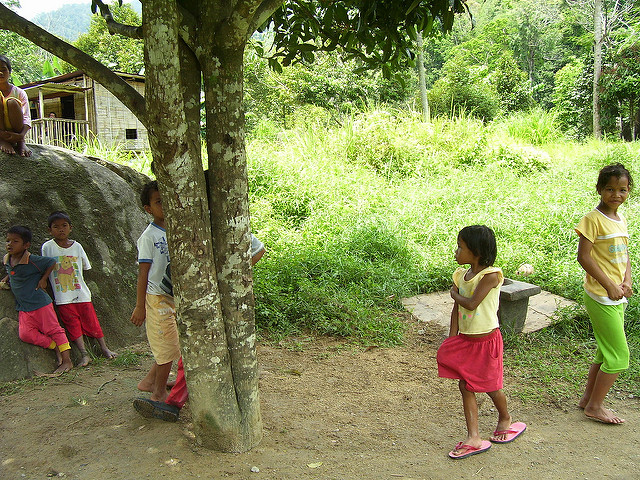A Malaysian university is installing an innovative hydro power project that will provide a sustainable supply of electricity to a remote Semai village in the Cameron Highlands. Harian Metro, a Malaysian newspaper, sent a reporter into the village to see the installation and report on the village of Pos Lemoi that will benefit from it. Pos Lemoi is composed of three settlements: Kampung Lemoi, Kampung Terlimau and Kampung Cenang Cerah.

The village is located about 25 km southeast of the resort town of Ringlet in the Cameron Highlands, but it has not had any sources of electricity except for some solar power and gasoline generators. The community is dark at night. And, of most notice to the reporter and to other visitors, the access road is very rough and can be traveled only by high-clearance, four-wheel-drive vehicles and motorcycles. The reporter accompanied a team from the Universiti Teknologi Malaysia (UTM) to visit the installation.
The project the engineers are installing is known as the Vortex Hydro Integration Project. According to a Wikipedia article, “vortex power is a form of hydro power which generates energy by placing obstacles in rivers/oceans in order to cause the formation of vortices which can then be tapped to a usable form of energy such as electricity.” The approach was developed by a team at the University of Michigan. A press release from the university helped explain the nature of the project. To judge by the photo that accompanied the newspaper article, the UTM engineers have adapted the technology for what appears to be a very small stream known as the Lemoi River.

A dam was built to funnel the water into a channel so that it would enter a basin, where it will rotate a turbine. The leader of the project, Professor Dr. Asan Ali Golam Hassan, said that the small generating station, construction of which started last November, will be environmentally friendly when it is finished in October. It will supply about 5 kilowatts of electric power to some of the 246 inhabitants living in the 40 homes in Kampung Lemoi. (All three settlements have 634 inhabitants.) About 40 kilowatts of power would be needed for all of the homes in just that one settlement. Dr. Asan Ali said that the vortex technology is being installed for a modest cost of RM 92,850 (US$22,000), which was funded by a grant from the Department of Higher Education.
The vortex hydro installation is located about 350 meters from the settlement. It is 90 percent complete and will be finished by the end of September. It is non-polluting and it will be easy to maintain. The professor explained that it is the first hydro vortex project to be implemented for any of the Orang Asli (Original People) communities in Malaysia. The development involved 21 researchers at various offices in UTM plus from other institutions in Malaysia.
Prof. Asan Ali explained that the electricity usage will be phased in, with power provided first to the community center, the clinic, street lights, and home interiors. The second phase the developers are planning is to provide power for cooperatives in Pos Lemoi so the communities can invest in business and marketing activities, the care of livestock, and possibly ecotourism.

The reporter spoke with the headman of the Semai village, Zainal Bahsiapa, who expressed his pleasure with the development. He said that while they have had some solar power, they have had problems with batteries that are easily damaged and are not durable. Generators run on expensive gasoline so they can’t be used very much either.
He did mention that road access to the village is a difficult, two-hour slog over the hills to the main paved road into Ringlet, which complicates their economic conditions. A blog account by a group of motorcycle riders taking a trip into Pos Lemoi includes numerous photos of the road and the village at the end of it.
The community does have an elementary school, which the motorcyclists saw from the outside. However, they were so caught up in their adventure of getting their machines along the nearly impassible track that they did not seem to wonder how other government services were being provided to a community without a usable access road.